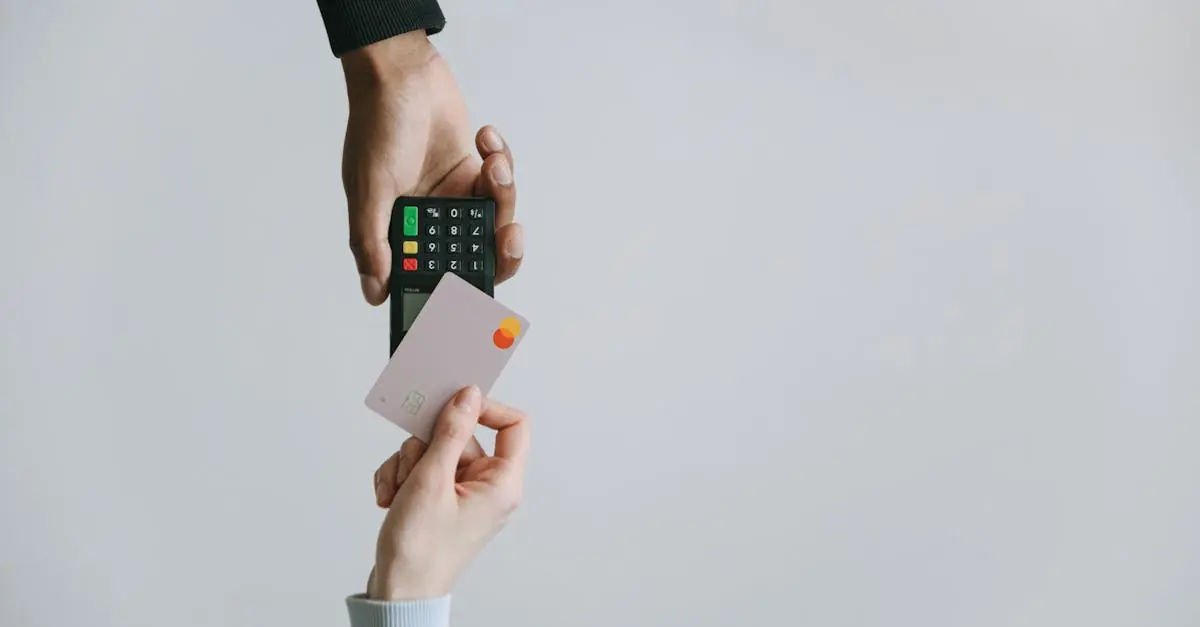Table of Contents
ToggleIn a world where money seems to flow like water, the notion of a global credit squeeze might feel like a sudden drought. Picture this: banks tightening their purse strings, lending standards getting stricter, and businesses finding it harder to secure the funds they need to thrive. It’s like trying to pour ketchup out of a nearly empty bottle—frustrating and messy.
Overview Of The Global Credit Squeeze
A global credit squeeze refers to a phase where financial institutions restrict lending, leading to limited access to credit. Banks respond to rising economic uncertainties by tightening lending standards, making it harder for businesses to secure necessary funds. Businesses face greater challenges in obtaining loans, causing potential growth to stagnate.
Despite the availability of capital, many organizations encounter increased scrutiny. Banks concentrate on risk assessment, prioritizing applicants with stronger financial profiles. This cautious approach leaves a significant portion of small and medium-sized enterprises without funding options, impeding their operations.
Declines in consumer spending also exacerbate the issue, as lower demand impacts business revenues. Economic forecasts indicate that decreasing cash flow puts additional strain on borrowers. High-interest rates further complicate matters, discouraging debt accumulation necessary for expansion or investment.
Statistical data reveals that during a credit squeeze, loan approvals can drop significantly. For example, studies show a 30% decrease in loan applications being granted, correlating with heightened risk perception among lenders. Such conditions create an environment where even creditworthy companies struggle to navigate.
Investors frequently express concerns over potential defaults. With stricter conditions imposed by lenders, an increased number of businesses grapple with maintaining liquidity. Consequently, the global credit squeeze intensifies, prompting calls for regulatory responses to restore confidence in the lending landscape.
Understanding the implications of this phenomenon is crucial for stakeholders across the financial spectrum. Mistakes made during these periods can have long-lasting effects on economic stability. Recognizing patterns in the global credit market allows for better preparedness in responding to shifts in lending practices.
Causes Of The Global Credit Squeeze
Several factors contribute to the global credit squeeze, creating a challenging environment for borrowers. Economic conditions and political influences play significant roles in shaping lending practices.
Economic Factors
Economic factors significantly impact lending behaviors. Rising inflation rates often lead to increased interest rates, making borrowing costs higher. As central banks raise these rates to stabilize economies, businesses face tighter budgets. Slower economic growth causes lenders to feel more cautious, heightening the perception of risk. Reduced consumer spending lowers business revenues, leading to less stability for borrowers seeking loans. A study indicates a 30% decrease in approved loan applications reflects these sentiments. Cash flow challenges for many companies make securing funding increasingly difficult.
Political Influences
Political influences affect credit availability as well. Instability from geopolitical events creates uncertainty, prompting banks to tighten their lending criteria. Regulatory changes also compel financial institutions to adopt stricter guidelines for risk assessment. Legislative decisions may impact economic performance, which in turn influences lenders’ willingness to extend credit. Additionally, trade policies can alter market dynamics, affecting businesses’ growth prospects. A cautious stance from lenders emerges amid this shifting landscape, exacerbating the global credit squeeze.
Impact Of The Global Credit Squeeze
The global credit squeeze has profound effects on various economic sectors. Both businesses and consumers face significant challenges in accessing credit.
On Businesses
Struggling businesses often experience cash flow constraints during a credit squeeze. Many small and medium-sized enterprises find it difficult to secure loans as banks tighten their lending standards. Securing funding becomes a daunting task, especially when loan approvals drop by as much as 30%. Those businesses with stronger financial profiles gain priority, leaving others without options. High-interest rates further diminish their ability to invest and grow. Liquidity challenges arise, affecting operational stability and leading to potential layoffs or downsizing. Economic uncertainty causes reserved spending, which directly impacts revenues and profitability. In this tough climate, businesses must adapt quickly or face closure.
On Consumers
Consumers also feel the pinch during a global credit squeeze. High-interest rates deter many from making large purchases or taking out loans. Confidence declines, leading to reduced consumer spending that critically affects businesses. Credit card issuers tighten their approval criteria, resulting in fewer consumers qualifying for new credit. Lower purchasing power emerges as people prioritize essential expenses. The tighter credit conditions create a cycle of reduced spending and further economic slowdown. Many households find themselves increasingly reliant on savings, limiting their ability to invest in bigger, long-term purchases. Consequently, the overall economic environment becomes less dynamic, further complicating recovery efforts.
Responses To The Global Credit Squeeze
Responses to the global credit squeeze vary among stakeholders, with many adopting measures to navigate the tightened financial landscape.
Policy Measures
Governments implement several policy measures to mitigate the consequences of a credit squeeze. Central banks may cut interest rates to stimulate borrowing and spending, easing financial strain. Fiscal policies also come into play, with increased government spending aimed at boosting economic activity. Some countries introduce direct support for small and medium-sized enterprises, providing grants or low-interest loans to help maintain operations. Regulatory adjustments may lower barriers for credit accessibility, facilitating lending to businesses that struggle during tightened credit conditions. These actions aim to restore confidence in the market and support economic stability.
Market Adjustments
Market adjustments often occur in response to the global credit squeeze. Investors shift their focus towards lower-risk assets, impacting capital flows. Valuations for companies with solid financials hold steady, while those seen as higher risk may experience declines. Alternative financing options, such as peer-to-peer lending, gain traction as businesses seek funds outside traditional banks. Crowdfunding platforms attract entrepreneurs looking to bypass tightening credit standards. Increased emphasis on maintaining cash reserves becomes common as firms prepare for the uncertainties ahead. These adjustments reflect a proactive approach towards navigating a challenging financial environment.
Future Outlook Of The Global Credit Squeeze
The outlook for the global credit squeeze suggests persistent challenges for borrowers. With banks continuing to tighten lending standards, many businesses face ongoing difficulty in securing funding. Companies perceived as risky may find access to credit even more limited. Persistently high-interest rates contribute to increased borrowing costs, further discouraging investments and expansion efforts.
Inflation rates remain a critical factor influencing the credit environment. Economists indicate that elevated inflation may force central banks to maintain or raise interest rates. As a result, small and medium-sized enterprises will likely experience prolonged hurdles in obtaining loans. Those businesses with stronger financial profiles might still secure funding, but the gap between them and less fortunate firms continues to widen.
Market response could shape future lending practices. Increased focus on lower-risk assets suggests that investors may become more selective. This selectivity may lead financial institutions to further restrict credit accessibility, limiting opportunities for less established companies. Alternatives like peer-to-peer lending and crowdfunding could gain traction, serving as potential options for businesses seeking funding.
Policy reactions will play a vital role in addressing the credit squeeze. Governments may consider additional measures, such as fiscal stimulus or regulatory changes, to enhance credit accessibility. Enhancements in the regulatory environment could provide substantial support for business lending. Cash reserves might become increasingly important, with firms prioritizing liquidity as they navigate these uncertain times.
Observing these developments is essential for stakeholders. Understanding how the credit landscape evolves will enable businesses and investors to adjust strategies accordingly. As the global economy continues to grapple with these financial constraints, the implications of a global credit squeeze will remain at the forefront of discussions among financial professionals.
The global credit squeeze presents significant challenges for both businesses and consumers. As banks tighten lending standards and prioritize creditworthy applicants, many small and medium-sized enterprises face limited funding options. This environment not only strains cash flow but also stifles growth potential.
Stakeholders must remain vigilant in navigating these complexities. Understanding the implications of a credit squeeze is vital for making informed decisions. By exploring alternative financing options and maintaining strong liquidity, businesses can better position themselves for recovery.
As the economic landscape evolves, adapting strategies in response to ongoing changes will be crucial for long-term stability and success.








